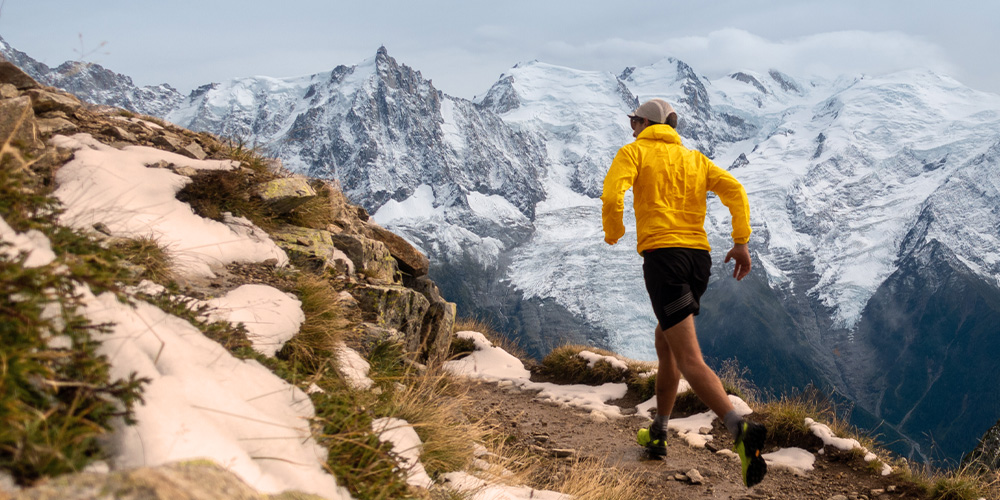Mountain runs are often a special challenge. It is not only the extra metres of elevation that make a mountain run special, but also the altitude, landscape and adaptable race tactics that make these events a unique experience. In this article, we would like to present some special features and at the same time give you tips on how to approach this unusual challenge.
Preparation
Good basic stamina is a prerequisite for successfully completing a mountain run. Compared to running on flat terrain, the different body position demands a different load on the gluteal muscles, the anterior thigh muscles and the back muscles, with an additional strain on the cardiovascular system.
In order to prepare optimally, we recommend additional training units on the ‘mountain’. Here you can find out how to integrate this method into your daily training routine.
Don’t forget that you also have to run downhill. The eccentric muscular exertion is quite unusual for runners used to flat trails and can cause muscular problems during and especially after running.
Running
Physical aspect and technique
As already mentioned, running in the mountains puts additional challenges on the body. In addition, the heart rate increases very quickly and you rarely have a chance to recover physical strength after the climb.
Some technical measures can help limit these effects to some extent:
- Walking upright – Try to push your hips forward and straighten the upper body.
- Looking forward – Don’t look directly at the ground in front of your feet, but continue to look ahead. This also helps to walk upright.
- Arm deployment – With the higher knee stroke the arm work automatically becomes more pronounced. And that is exactly what is important. Make sure you keep your shoulders and arms relaxed and let your wrists pass close to your hips as you swing. The impulse of the pendulum movement should go backwards.
- Fast walking/power walking – Depending on the steepness of the path and your personal level, running is no longer possible even on small inclines without being immediately overexerted. For this reason, you can and should also switch to brisk walking or power walking. Especially in competitions, it is very sensible to switch to walking in order not to have missed the mark after only a few meters of altitude. By the way, even professional mountain runners change their step more often and are therefore not slower than others. But power walking also needs to be practiced!
Mental aspect and running tactics
When running uphill, it is extremely important to think about your pace in advance and have a detailed plan. Once you slip into the red zone, it is much more difficult, compared to flat runs, to give your body time to recover and regain the desired pace.
The running.COACH running time calculator can help you adapt your pace to the different sections of the course.
However, mountain runs, especially when you are mentally challenged, have often a decisive advantage over flat runs: the environment and the views. In difficult moments, force yourself to immerse yourself in the environment and enjoy the ride: after all, that is why we run.

